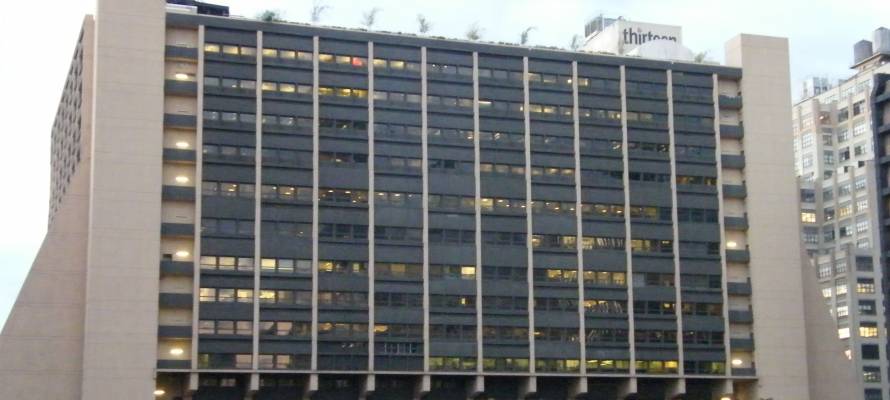The large international news agencies are a major source of information abroad concerning Israel, but when this information is disproportional and incorrectly negative, the impact has far-reaching consequences on a global level.
The ability to manipulate language is crucial if a journalist wants to transmit a biased message. Apparently, Associated Press journalists have both the ability to manipulate language and guidelines that are driving them to do so. The AP apparently believes that Palestinians can never be terrorists, regardless of how many Israeli soldiers and civilians they kill or attempt to kill.
One wonders whether journalists new to the AP’s Israel office get an introductory session where they are told that they must not make use of the words “Palestinian terrorists.” It seems, however, that the AP will let its reporters quote an Israeli official saying that a perpetrator of a terror attack is a “terrorist” — so long as the journalist does not use such incendiary terminology himself. The same goes for terms such as “Palestinian attackers” and “assailants.”
Perhaps newcomers are also offered a convenient list of AP-approved synonyms for describing murderous activities by Palestinians that sidestep what the terrorists actually do: murder others, particularly civilians, out of ideological motives. Thus the Palestinian killer of Israelis becomes, in the agency’s jargon, a Palestinian extremist, militant, gunman, lone wolf or rebel.
The United States considers Hamas and Hezbollah to be terrorist groups. They are on the list of foreign terror organizations prepared by the US Department of State, as well as the governments of France, Canada and Australia. The EU considers both to be terrorist organizations as well. Despite this official categorization, the AP commonly refers to Hamas and Hezbollah as “militant” organizations.
One might wrongly assume that the AP believes it is impossible for Muslim murderers to be terrorists. Yet when spouses Syed Rizwan Farook and Tashfeen Malik shot 14 civilians dead in San Bernardino, California, on December 2, 2015, apparently without the direct support of any organization, the AP showed no such restraint. It described them as terrorists, without quotation marks. It did not term them “gunmen” or “lone wolves.”
AP reporters covering members of the Pakistan-based Muslim terror group that carried out the 2006 Mumbai attacks, killing more than 160 people, also described them unequivocally as terrorists, again without quotation marks. The AP also used this term for the ISIS-backed terrorists who perpetrated a series of attacks in Paris in November 2015 that killed 130 people. Even Richard Reid, the Muslim “Shoe Bomber” who was caught before he managed to commit an intended act of terror on a 2001 flight, was described as a “terrorist plotter,” without quotation marks, by the AP.
The large international news agencies are a major source of information abroad concerning Israel. Their bulletins are used by many media channels worldwide, and when this information is disproportionally and incorrectly negative about Israel, the impact of that negativity has far-reaching consequences on a global level. It is therefore hugely important to expose double standards in their reporting.
There is much more to say about the special set of semantics that the AP uses in anything to do with Israel. In 2001, 16-year-old Shoshana Ben-Yishai was murdered in a random Palestinian terrorist attack in Jerusalem. With complete irrelevance to the attack, the AP described the victim as a “settler,” because she lived in Beitar Illit, roughly one mile away from the Green Line.
Furthermore, the AP went on to describe the Israeli civilian who shot and killed Ben-Yishai’s terrorist murderer as a “West Bank settler,” again information totally irrelevant to the attack itself — which took place in Israel’s capital. HonestReporting rightly noted that “labeling Israelis as anything less than “civilians” suggests that they are combatants, and helps legitimize Palestinian attacks against them.”
Manipulating headlines is another well-known technique used to distort news reporting. At the height of the Second Intifada in 2002, the AP reported on two incidents involving Palestinian terrorists on the same day. In one incident, a Palestinian terrorist opened fire at random in downtown Jerusalem, wounding eight Israelis. That same day, Israel uncovered a Hamas bomb factory in the West Bank and killed the four terrorists who operated it. The AP headline for that day was “Israel Kills 4, Palestinian Wounds 8.” In another incident several days later, a Palestinian terrorist used a stolen car to run over police, soldiers and pedestrians before being shot. The AP headline for this incident: “Palestinian shot dead in Tel Aviv.”
In view of the many bulletins the AP puts out about events concerning Israel and the way it influences worldwide perception of Israel’s actions, a detailed study is needed to investigate the AP’s editorial policies in far more depth than has been done to date. Former AP journalist Matti Friedman published inside information that indicated a structural prejudice against Israel in the agency. A major media with bias against Israel should be analyzed by the Israeli authorities like any other hostile force.
One can only wonder what would happen if exposure of the AP was moved up to the government level. How would the AP react if the Israeli government spokesperson opened every press conference with a list of the biased semantics and headlines used by AP since the previous press conference? How many times would such public and detailed exposure be needed before the AP headquarters realized that its manipulations were now transparent and must be discontinued in order to maintain any journalistic credibility?
By: The Algemeiner
